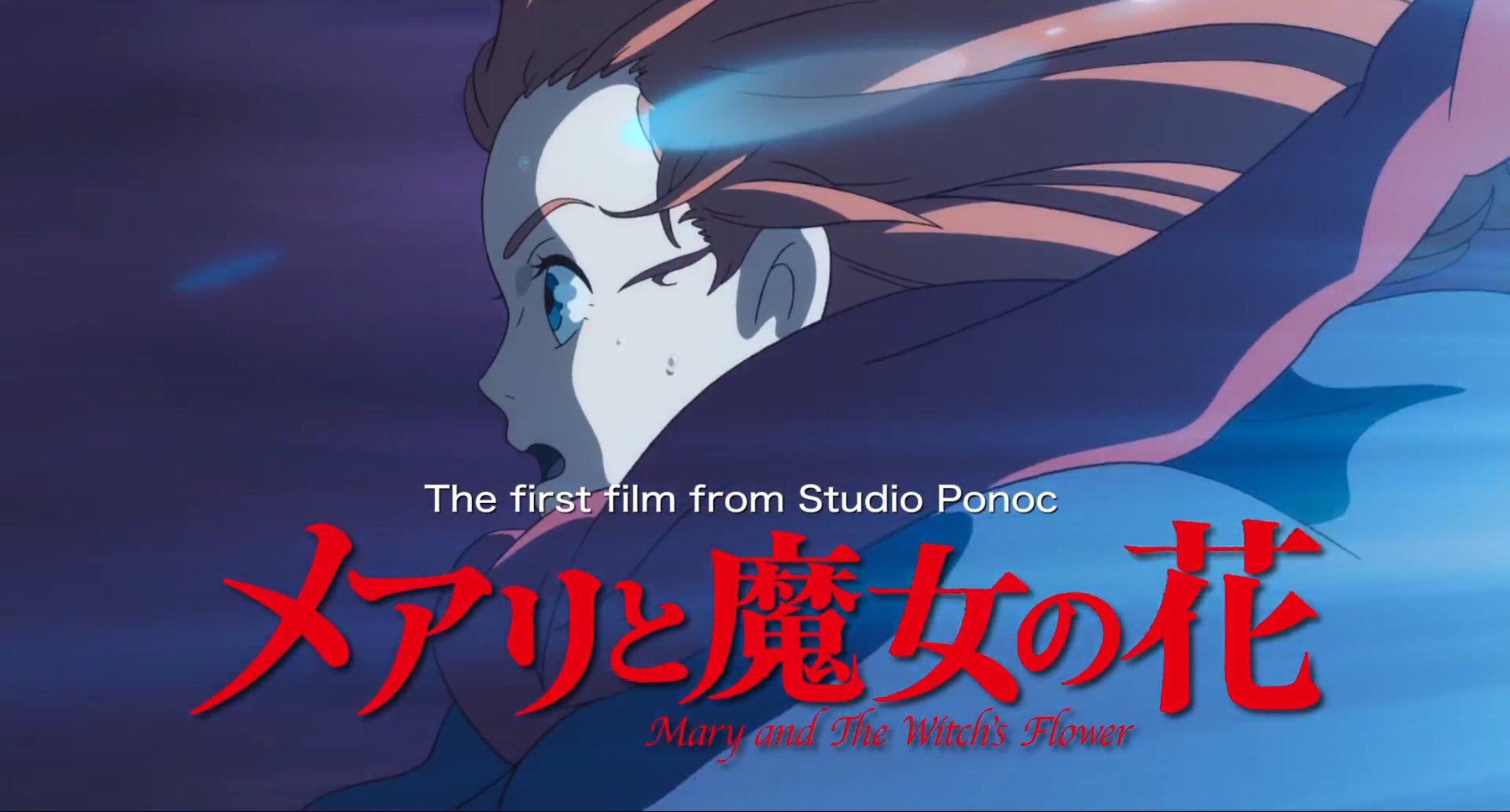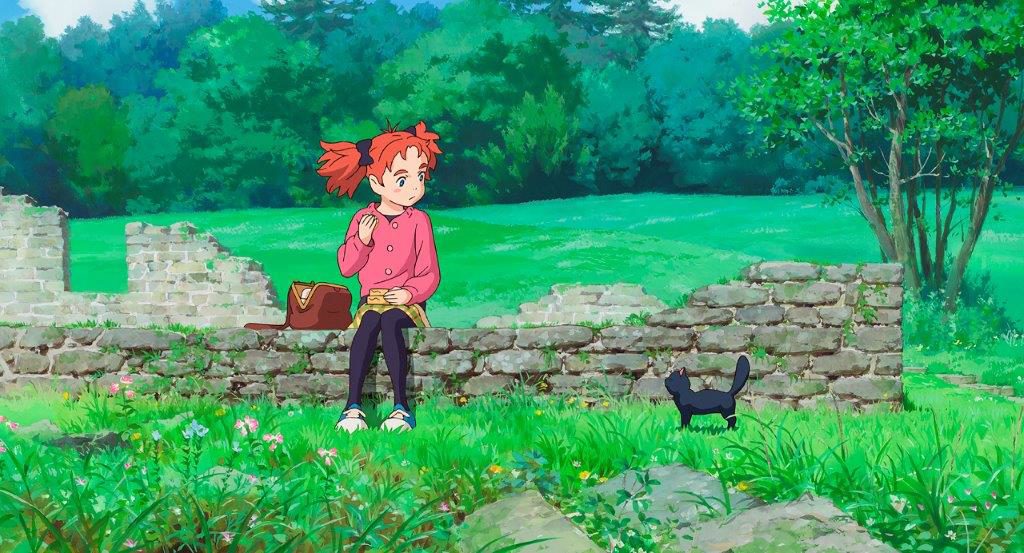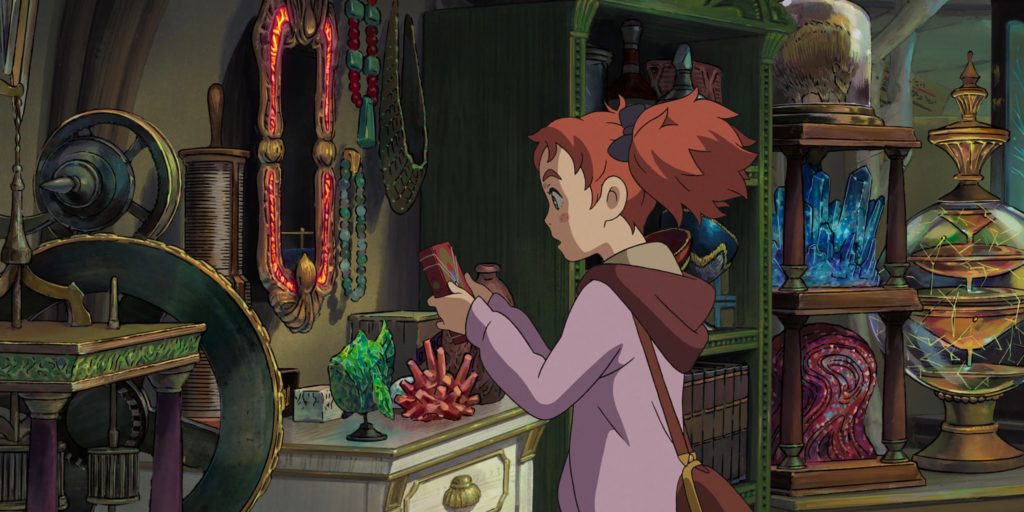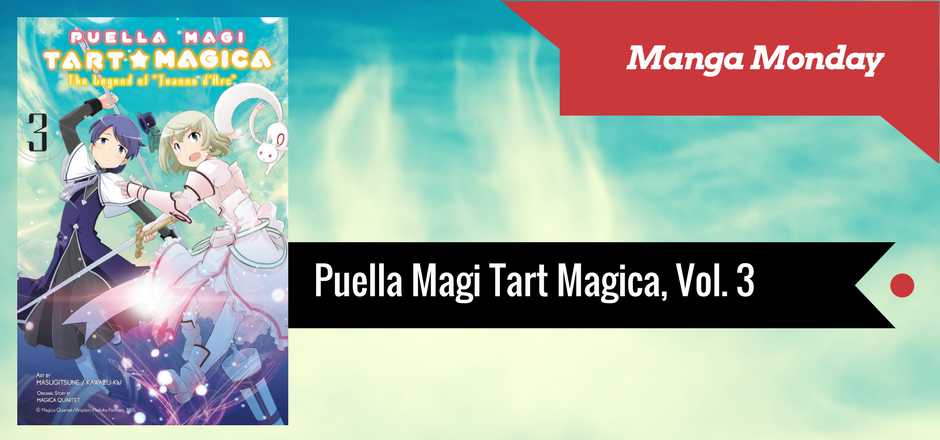Author’s note: This article contains spoilers for the anime film Mary and the Witch’s Flower.
—
Studio Ghibli—or rather, Studio Ponoc—is back, with a new feature length film: Mary and the Witch’s Flower. If you’re not familiar with Studio Ponoc, that’s because they’re fairly new, founded by Yoshiaki Nishimura and Hiromasa Yonebayashi in 2015.
Studio Ponoc broke away from Studio Ghibli soon after Hayao Miyazaki and Isao Takahata—the mainstays of Studio Ghibli—announced their retirement. (Although Miyazaki came back out of retirement again, in early 2017, to make a short film, Boro the Caterpillar, for the Ghibli Museum.) In addition to Miyazaki and Takahata’s retirement, Studio Ghibli had been having financial difficulties, like much of the anime industry at the time, and The Wind Rises (2013) and The Tale of Princess Kaguya (2013) did not bring in as much money as the Studio hoped for. (This was what Studio Ghibli must have believed at the time, because The Wind Rises later became the highest-grossing film in Japan in 2013.) Thus, Studio Ponoc was born!
Studio Ponoc’s first film, Mary and the Witch’s Flower (メアリと魔女の花), came out in Japan in last year, but was recently released to U.S. theaters on January 18. Similar to Yonebayashi’s previous two films—The Secret World of Arrietty (2010) and When Marnie Was There (2014)—Mary and the Witch’s Flower is based on a British novel, a children’s book called The Little Broomstick by Mary Stewart.
Mary and the Witch’s Flower centers on Mary, a young girl who has recently moved in with her Great Aunt Charlotte. Her parents are supposed to be joining her soon, but it is unclear when. Thus, Mary is left all alone with Aunt Charlotte and her maid, Miss Banks. Mary’s definitely lonely. She tries to find things to do, but she’s clumsy and is shooed (nicely) away from any chores by Miss Banks. One afternoon, while eating lunch, Mary encounters a cat—two cats in fact—and soon finds herself on an adventure involving a magical flower called fly-by-night, a little broomstick, and a magical school called Endor College.
The film moves fairly slowly. It has its ups and downs, but the pacing was definitely planned with a younger audience in mind. So it’s the animation—the backgrounds specifically—that really draws you in, just like other Ghibli films. It makes want to join in on the adventure. The Studio went to England to study the landscapes before animating the film; however, since Ghibli never allowed their animators to draw from photographs (they were definitely not allowed to trace over photographs like most other studios do), Studio Ponoc did the the same thing. Drawing from memory, rather than from photographs, makes the backgrounds and various settings feel real, yet imagined, all at the same time. This was one of the strongest aspects of the film, the backgrounds and character designs.
Overall, I enjoyed Mary, and there’s no doubt in my mind that Studio Ponoc will be giving us more wonderful films to come. But there felt like there was something missing from the film. And it took me a couple of days to really digest the whole thing and put my finger on the issue. I think the missing piece is twofold, and includes both the characters and the animation. But my main issue is with the characters, who just fell flat for me.
Rather than feeling like animated versions of real people, as the characters feel like in so many Ghibli films, the characters felt more like figures or even tropes. And in essence, they looked and sounded more like plot devices and clichés. They felt more like shadows than solid characters. Madame Mumblechook and Doctor Dee fell into this trap most of all (i.e., the Crone Witch and the Mad Scientist, respectively), but Peter, the male counterpart to Mary, didn’t play much of a role either.
Peter was one of the catalysts for Mary’s actions. He was more of a plot device than a person. Unlike previous Ghibli male counterparts to the main female character (I’m thinking of the well-rounded Tombo in Kiki’s Delivery Service), Peter simply teased Mary about her red hair and warned her not to go into the forest when it was foggy. He didn’t do anything else, he didn’t appear to be interested in anything else, and he didn’t make his own choices. He was simply a plot device and nothing more.
Mary, on the other hand, was a static character. Even though she almost gave up when all hope was lost toward the end of the film, she pushed through and succeeded in the end. This is one of the themes of the film—the idea to never give up even when things become their darkest—and while it is an important message and worth the watch, I didn’t feel as though Mary learned that lesson. From the start of the film she was stubborn, and she always kept trying to do new things, even when she was really bad at them. So unlike other Ghibli protagonists, I didn’t feel as though she grew by the end of the film, only stayed the same.
My second issue with the film goes back to the animation, although, overall, it was very similar to previous Ghibli films, and I have little to complain about. But unlike films like Howl’s Moving Castle, for example, the animation didn’t feel as polished or real. The scene when Mary is given a tour around Endor College—when you get to see all the different classes and activities she could participate in if she enrolled in the school—felt too fast and chaotic for me. If felt force instead of natural. There’s just something about the castle in Howl’s Moving Castle that, although you know it would be impossible to construct in real life, it still feels real. Endor College didn’t feel as real to me, although there were scenes, like the one pictured above that definitely nodded to the animation in Ghibli films of old.
If you get the chance, go see Mary and the Witch’s Flower. It’s so important to support animated films and shows from Japan in American theaters. It helps keep them coming. And I definitely want to keep them coming. I want to see more from Studio Ponoc. So take your children to go see Mary and the Witch’s Flower, because this one’s definitely for them.
Mary and the Witch’s Flower was presented in the U.S. by GKIDS and Fathom Events on January 18, 2018.
Story: 4 out of 5 stars
Art: 4 out of 5 stars
Overall: 4 out of 5 stars
—
Rine Karr is an Anime Writer at Girls in Capes. She’s a writer and aspiring novelist by moonlight and a copyeditor by daylight. Rine loves good food, travel, and lots of fiction, especially novels, anime, manga, video games, and films. She’s also the Chief Copyeditor and an occasional contributor at Women Write About Comics.
This review contains affiliate links. While Girls in Capes does make revenue from purchases made at affiliate links, reviews are not paid, and all reviews contain the staff writers’ honest opinions of the work.
[coffee]









